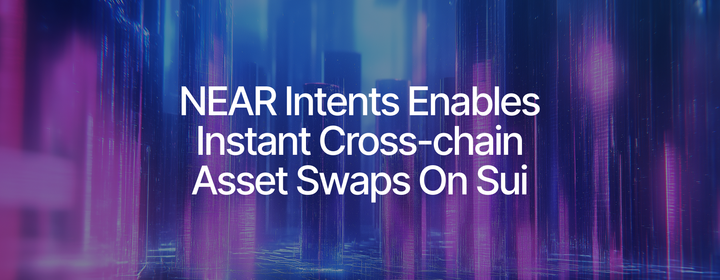Cost Efficiency, Composability, and Decentralization with Sui’s Liquid Staking
Sui's liquid staking implementation avoids barriers commonly associated with liquid staking protocols and tokens.

Liquid staking emerged as a foundational element for DeFi on proof-of-stake blockchains, with approximately 45 percent of total staked ETH currently locked in liquid staking protocols. This substantial adoption highlights a clear demand for liquid staking tokens (LSTs) among users.
However, on many blockchains, particularly those using the Ethereum virtual machine (EVM), existing liquid staking protocols pose challenges for both users and developers, often raising concerns about stake decentralization. For instance, over 30% of staked ETH on Ethereum is attributed to Lido, the primary liquid staking protocol.
Sui's approach to liquid staking sets itself apart, providing native integration with the network through a unified coin standard and composability. These features set the stage for more efficient and cost-effective liquid staking transactions.
Sui’s coin standard
Liquid staking on Sui addresses a prevalent issue seen in various proof-of-stake implementations, where users who have already staked SUI encounter the unbonding period when attempting to utilize a liquid staking protocol. Sui introduces a significant improvement in staking design by enabling the exchange of the staked SUI object for an LST. This innovative approach lets users seamlessly transition to liquid staking without the constraints of the unbonding period, a notable advancement facilitated by Sui's use of a single coin standard
Unlike the approach of having multiple token standards depending on the intended use, Sui adopts a unified and comprehensive coin standard. This singular standard simplifies integration for apps, as they only need to support this single coin type, eliminating the necessity to integrate different token standards for compatibility. On Sui, all tokens, regardless of their purpose, are treated equally as coin objects at the network layer. This uniformity is advantageous for liquid staking protocols, ensuring that apps seamlessly recognize both SUI and staked SUI objects. The functionality of natively staked SUI can be extended without requiring changes to the security of the underlying staked asset.
A distinctive feature of Sui's single coin type is the absence of differing computational requirements when interacting with LSTs compared to the native asset, SUI. In contrast, platforms like Ethereum impose higher gas costs for interacting with ERC-20 tokens, such as LSTs, compared to the native asset, ETH. On Sui, this translates to no difference in gas pricing between native SUI and LSTs. This eliminates any gas-related burdens commonly observed on EVM-based chains, providing a seamless and uniform experience for users interacting with different tokens on the Sui network.
Sui LST composability
Sui's native staking implementation enhances the composability of liquid staking by enabling stake and unstake actions to be entirely onchain and, crucially, atomic. This contrasts with the predominantly offchain solutions in many other ecosystems, which lack the atomic nature necessary for composable extensions of native staking. Sui's approach ensures seamless and secure composability, allowing for more flexible and integrated interactions within the liquid staking ecosystem on the Sui network.
Upon unstaking an LST on Sui, it is possible to receive the corresponding SUI in the same transaction. Leveraging Sui's primitive, Programmable Transaction Blocks (PTBs), the unstaked SUI can be seamlessly utilized as input for another function within the PTB. This high degree of composability is a direct result of both PTBs and Sui's innovative liquid staking design, showcasing the platform's ability to enable versatile and interconnected transactions.
Staking decentralization
Liquid staking serves as a fundamental catalyst for enhanced decentralization by incentivizing users to engage in both staking to the network and providing capital to DeFi protocols. This contrasts with scenarios where users are given the option to solely choose one option, often based on the return, likely leading to a less favorable outcome for the overall amount of native stake delegated to validators. The dual incentivization mechanism in liquid staking promotes a more balanced and decentralized participation, contributing to the robustness and resilience of the network.
Moreover, Sui's native staking mechanism facilitates permissionless delegation, letting users stake as little as one SUI to any validator within the active validator set. This intentional design choice plays a crucial role in promoting long-term decentralization of stake. The LSTs on Sui often follow a similar design, preserving the same decentralized benefit. This commitment to accessibility and decentralization underscores Sui's dedication to creating an inclusive and robust staking ecosystem.
In line with any DeFi protocol, transparency stands as a paramount consideration in product design. For liquid staking protocols, a key avenue for promoting transparency is providing visibility into the protocol's underlying delegation. This, coupled with the capacity for permissionless delegation to any validator, offers users a valuable level of transparency. It allows users to understand the state of a liquid staking protocol at any given point in time.
Solidifying liquid staking knowledge
Sui's innovative approach to liquid staking represents a significant evolution of Sui DeFi. Addressing challenges seen in other ecosystems, Sui introduces a unified and comprehensive coin standard, eliminating many common issues observed by both users and developers.
Embracing the core philosophy of promoting decentralization in blockchain technology, Sui's liquid staking implementation not only contributes to the decentralization of the network but also encourages active user participation in DeFi activities. In essence, liquid staking on Sui reflects a holistic and forward-thinking approach, poised to enhance and reshape the landscape of decentralized finance.
Additional contributions for this article came from Kevin (@KevinAftermath), Co-Founder and CTO of Aftermath Finance.



